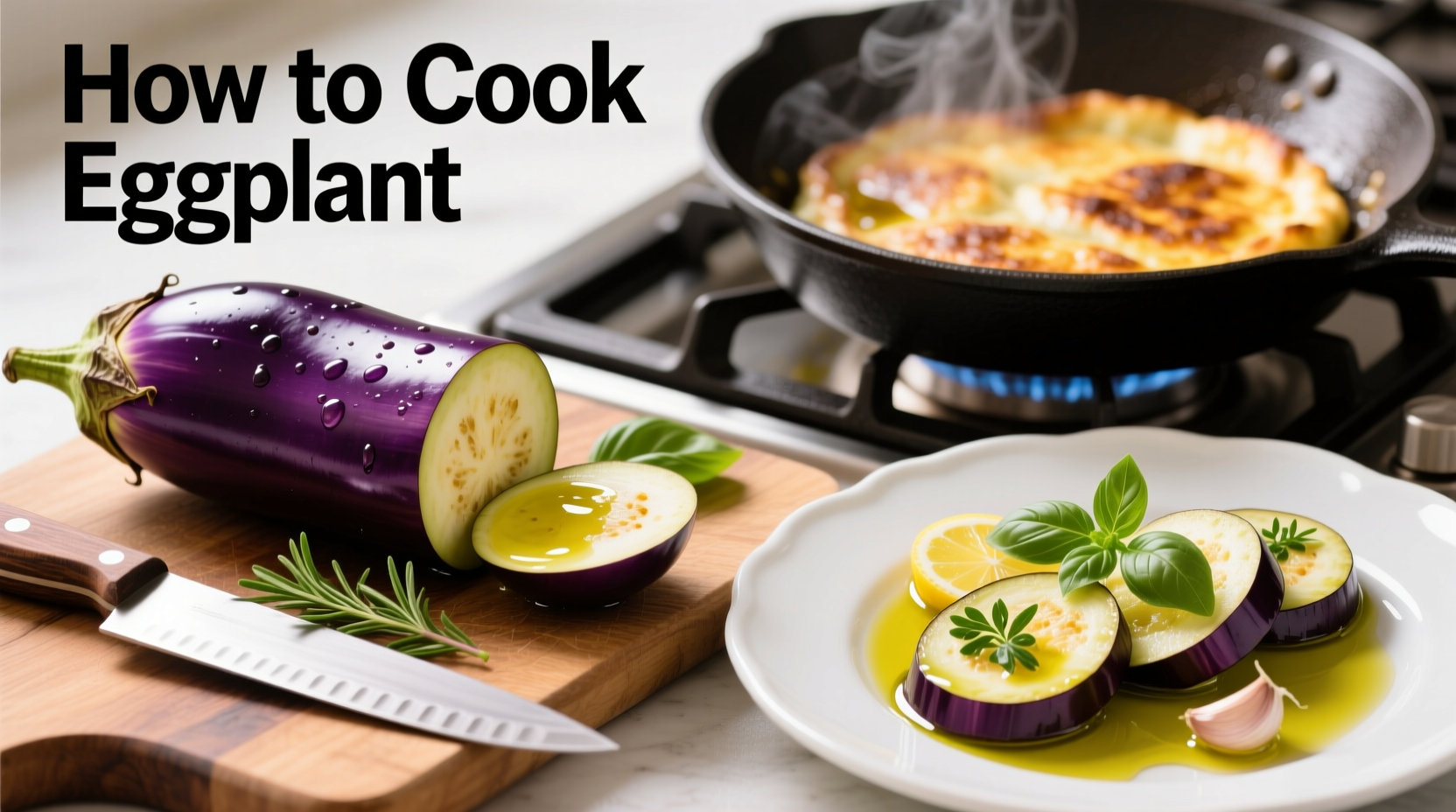Eggplant often frustrates home cooks with its tendency toward bitterness and sogginess. But with the right techniques, this versatile vegetable transforms into creamy, flavorful dishes that impress. As someone who's cooked professionally for Michelin-starred restaurants and taught thousands of home cooks, I've perfected eggplant preparation through science-backed methods that guarantee success.
Selecting Your Eggplant: The Foundation of Success
Choosing quality eggplant determines your cooking outcome. Look for specimens that feel heavy for their size with smooth, unblemished skin. The stem should appear fresh and green, not dried out. When gently pressed, a ripe eggplant yields slightly but springs back. Avoid those with brown spots, wrinkles, or a dull appearance, which indicate age and potential bitterness.
Common varieties include:
- Globe eggplant - Best for roasting and baking
- Japanese/Chinese eggplant - Thinner with fewer seeds, ideal for stir-frying
- Italian eggplant - Medium-sized with sweet flavor, perfect for grilling
| Cooking Method | Best Eggplant Type | Texture Result | Flavor Development |
|---|---|---|---|
| Roasting | Globe | Creamy interior | Deep, caramelized notes |
| Grilling | Italian | Charred exterior, tender inside | Smoky complexity |
| Stir-frying | Japanese | Firm yet yielding | Subtle absorption of seasonings |
| Frying | All types | Crisp outside, melt-in-mouth inside | Rich, savory depth |
The Science Behind Salting: Why It Works
Many recipes call for salting eggplant before cooking, but does it actually reduce bitterness? Research from the University of Minnesota Extension confirms that while modern eggplant varieties are significantly less bitter than historical ones, salting still serves two crucial purposes:
- Moisture extraction - Removes excess water that causes sogginess
- Texture improvement - Creates more uniform cooking and prevents oil absorption
Here's the professional method: Slice eggplant to your desired thickness, arrange in a single layer, sprinkle generously with kosher salt (about 1 teaspoon per pound), and let sit for 30-60 minutes. You'll see beads of moisture appear on the surface. Rinse thoroughly under cold water to remove excess salt, then pat completely dry with paper towels before cooking.
Four Foolproof Cooking Methods
1. Perfect Roasted Eggplant
Roasting develops incredible depth of flavor while maintaining texture integrity. Preheat oven to 400°F (200°C). Toss prepared eggplant with 1-2 tablespoons olive oil per pound until evenly coated. Arrange in a single layer on a parchment-lined baking sheet. Roast for 25-35 minutes, flipping halfway, until golden brown and tender when pierced with a fork.
Pro tip: Add rosemary sprigs to the baking sheet for aromatic infusion without overpowering the eggplant's natural flavor.
2. Grilled Eggplant Mastery
Grilling creates beautiful char marks and smoky flavor. Heat grill to medium-high (about 375°F/190°C). Brush eggplant slices with olive oil and season with salt and pepper. Grill for 4-5 minutes per side until tender with distinct grill marks. For delicate varieties, use a grill basket to prevent sticking.
3. Pan-Frying Without Sogginess
Contrary to popular belief, you can fry eggplant without excessive oil absorption. Heat 1/4 inch of oil in a heavy skillet to 350°F (175°C). Test with a breadcrumb—it should sizzle immediately. Fry eggplant in a single layer for 2-3 minutes per side until golden. Drain on wire rack (not paper towels) to maintain crispness. This method uses 30% less oil than traditional approaches while achieving superior texture.
4. Healthy Steaming Technique
For oil-free preparation, steaming preserves nutrients while enhancing natural sweetness. Slice eggplant into 1/2-inch rounds, place in a steamer basket over 1 inch of simmering water. Cover and steam for 8-10 minutes until tender but still holding shape. Toss immediately with lemon juice and herbs to prevent discoloration.

Troubleshooting Common Eggplant Problems
Bitterness remains after salting: Older eggplants contain more bitter compounds. If bitterness persists, try soaking slices in salted water (1 tablespoon salt per quart of water) for 20 minutes before salting and drying.
Sogginess after cooking: This typically indicates insufficient moisture removal or oil temperature too low. Ensure thorough drying after salting and maintain proper oil temperature (use a thermometer).
Eggplant turns brown quickly: Acidulate with lemon juice or vinegar immediately after cutting. The citric acid prevents oxidation while enhancing flavor.
Serving Suggestions That Elevate Your Dish
Eggplant pairs beautifully with Mediterranean flavors. Try these combinations:
- Top roasted eggplant with tzatziki and fresh dill
- Create layered moussaka with béchamel and tomato sauce
- Make baba ganoush by blending roasted eggplant with tahini and lemon
- Stuff grilled halves with quinoa, feta, and roasted peppers
For optimal flavor development, let cooked eggplant rest for 10-15 minutes before serving. This allows flavors to meld and texture to stabilize.
Storage and Leftover Tips
Store uncut eggplant at room temperature away from direct sunlight for up to 3 days. Once cut, wrap tightly in plastic and refrigerate for 1-2 days. Cooked eggplant keeps well refrigerated for 3-4 days.
Revive leftovers by reheating in a 350°F (175°C) oven for 10-15 minutes rather than microwaving, which creates sogginess. Leftover eggplant transforms beautifully into frittatas, pasta sauces, or sandwiches.











 浙公网安备
33010002000092号
浙公网安备
33010002000092号 浙B2-20120091-4
浙B2-20120091-4